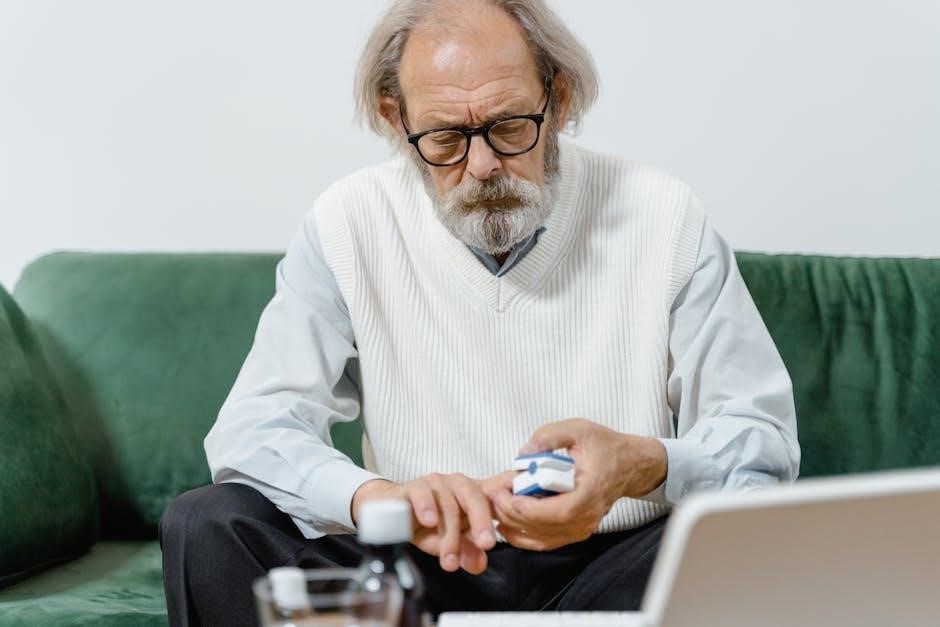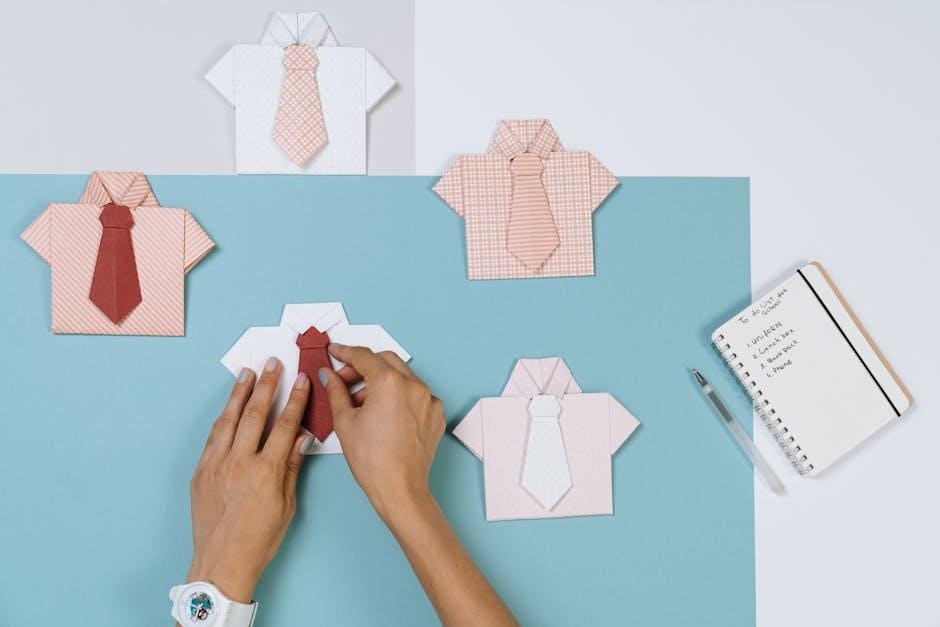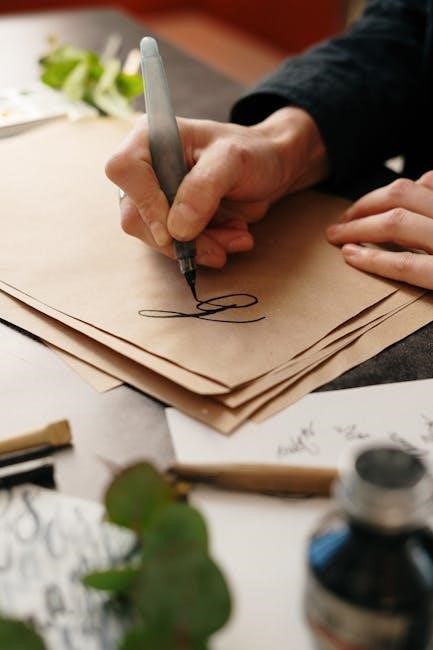
ediblecakeimage.com instructions
Edible cake images are a popular way to personalize desserts, offering customizable designs that transform cakes into stunning visual treats. Easy to apply, they create professional results.
1.1 What Are Edible Cake Images?
Edible cake images are food-grade, customizable designs printed on materials like wafer paper, icing sheets, or sugar paper. They are created using edible inks and can feature photos, patterns, or artwork. These images are applied to cakes, cupcakes, or cookies, blending seamlessly into the frosting for a professional, personalized finish. They are versatile and easy to use for any occasion.
1.2 Benefits of Using Edible Images on Cakes
Using edible images on cakes offers numerous advantages, including professional-looking results, customization options, and ease of application. They save time compared to traditional decorating methods and can be tailored to any theme or occasion. Edible images are also versatile, working well on various cake types, from fondant to buttercream, ensuring a flawless finish and impressing guests with personalized designs.

Tools and Materials Needed
Essential tools include scissors, a craft knife, or a printer for precise cuts. Materials like icing sheets, edible ink, and a smoothing tool ensure a professional finish. Optional items include a piping bag for touch-ups and a skewer for support.
2.1 Essential Tools for Applying Edible Images
Sharp scissors or a craft knife are necessary for precise cutting of edible images. A printer with edible ink ensures vibrant prints on icing sheets. A smoothing tool helps remove air bubbles, while a clean, dry surface is crucial for application. Optional items like a piping bag or skewer can aid in positioning and support for intricate designs.
2.2 Recommended Materials for Best Results
Use high-quality edible icing sheets or wafer paper for crisp, vibrant prints. Edible printers with food-grade ink ensure safe and durable images. Clean, dry tools like sharp scissors or a craft knife are essential for cutting. Fondant or buttercream-coated cakes provide the best surface for adhesion. Optional materials include edible glue for securing and piping bags for intricate designs.

Step-by-Step Tutorial on Applying Edible Images
Applying edible images involves peeling the backing, placing the image on the cake, and smoothing it out for a seamless look.
3.1 Preparing the Cake Surface
To ensure a smooth application, bake and cool the cake completely. Frost the cake with a thin, even layer of buttercream or ganache. Allow the frosting to set slightly. Gently remove any crumbs or air bubbles for a clean surface. Use a turntable to access all sides easily. A dry, smooth cake surface is essential for the edible image to adhere properly and look professional.

3.2 Cutting and Sizing the Edible Image
Carefully cut out the edible image using sharp scissors or a craft knife, ensuring it fits the cake size. Use a ruler to measure and align the image properly. Trim excess edges smoothly to avoid stretching or tearing. For intricate designs, a craft knife is ideal for precise cuts. Ensure the image is proportionate to the cake for a professional finish.
3.3 Applying the Image to the Cake
Gently peel the backing from the edible image and place it on the frosted cake. Start by aligning the center, then smooth outward with your hands or a tool to prevent air bubbles. For larger images, roll from the middle to the edges. Ensure the surface is even and the image adheres securely without wrinkles or creases.
3.4 Smoothing and Securing the Image
Use a clean, dry tool or your hands to smooth the edible image, ensuring no air bubbles or wrinkles remain. Gently press the edges to secure them firmly to the cake. For best adhesion, avoid refrigerating immediately after application. Let it set at room temperature for a few minutes to ensure a seamless finish and long-lasting results.

Designing Custom Edible Images
Design custom edible images using food-grade printers and edible ink. Print vibrant, high-resolution designs on wafer or icing sheets for personalized cake decorations. Ensure color consistency and clarity for professional results.
4.1 Choosing the Right Printer and Ink
Selecting the right printer and ink is crucial for creating vibrant edible images. Use a food-grade printer with edible ink cartridges to ensure safety and quality. Printers designed for edible images provide precise, high-resolution outputs. Compatible with icing sheets or wafer paper, they ensure consistent color and detail. Always opt for high-quality ink to achieve professional-looking results for your custom designs.
4.2 Design Tips for Creating Visually Appealing Images
For visually appealing edible images, emphasize contrast and focus. Use vibrant colors to make designs pop on cakes. Ensure images are high-resolution for clarity. Avoid clutter; keep compositions simple and balanced. Match themes to occasions for relevance. Opt for readable fonts and minimal text. Experiment with borders or frames to enhance visuals. Always preview designs before printing for a polished look.

Tips for Using Edible Images on Different Cake Types
Ensure smooth application on frosted cakes, as they provide the best surface. Fondant cakes offer durability, while buttercream cakes require gentle pressing to avoid smudging the image.
5.1 Best Cake Types for Edible Images
Fondant cakes are ideal due to their smooth, even surface, ensuring sharp image clarity. Buttercream cakes work well when chilled, preventing smudging. Chocolate and red velvet cakes provide a firm base, though application may require care. Pound cake’s density is suitable, while sponge cake may need frosting for image adhesion. Ensuring a clean, dry, and even surface is crucial for optimal results, regardless of cake type.
5.2 Special Considerations for Fondant, Buttercream, and More
Fondant cakes require a smooth, even surface for optimal image adhesion. Buttercream cakes should be chilled to set the frosting, preventing smudging. For chocolate or red velvet cakes, a thin layer of buttercream or piping gel helps secure the image. Ensure the cake is freshly baked and fully cooled before application for the best results and longest-lasting appearance.

Troubleshooting Common Issues
Air bubbles and wrinkles can be smoothed with a gentle touch or tools. Alignment issues can be adjusted before the image fully adheres to the cake.
6.1 Avoiding Air Bubbles and Wrinkles
To prevent air bubbles, apply the edible image gently from the center outward using a credit card or smoothing tool. Ensure the cake surface is even and dry. Avoid stretching the image, as this can cause wrinkles. If bubbles appear, lightly press them with a pin or tool. Handle the image carefully to maintain its smooth appearance.
6.2 Fixing Image Alignment and Positioning
For alignment issues, peel the image slightly and adjust its position. Reattach gently, ensuring it’s centered. If misaligned, use a small amount of water or edible adhesive to reposition without stretching. Smooth out any wrinkles or air bubbles that form during adjustment. Proper alignment enhances the cake’s visual appeal and professional finish. Always handle with care to avoid further misalignment.

Storage and Handling of Edible Images
Store edible images in sealed plastic bags at room temperature, away from direct light and moisture. Avoid refrigeration to prevent damage and extend shelf life effectively.
7.1 Proper Storage Conditions
Store edible images in a cool, dry place, away from direct sunlight and moisture. Use sealed plastic bags or airtight containers to maintain freshness. Avoid refrigeration, as humidity can cause damage. Keep images flat to prevent bending or creasing. Ensure the storage area is clean and free from strong odors to preserve quality and appearance.
7.2 Shelf Life and Usage Guidelines
Edible images typically last up to six months when stored properly. Use them within a few days of printing for vibrant colors. Avoid exposure to heat or moisture, which can cause fading or peeling. Apply the image just before serving to ensure freshness and optimal adhesion to the cake surface. Use clean, dry hands for handling to prevent damage.

Advanced Techniques for Edible Cake Images
Explore creative methods like 3D effects, layering images, and combining with fondant or buttercream for intricate designs. These techniques elevate cakes to professional, visually stunning masterpieces easily.
8.1 Creating 3D Effects with Edible Images
3D effects can be achieved by layering edible images, using isomalt for structural support, and adding edible glitter or dust. Tutorials suggest cutting shapes with craft knives, painting details with food coloring, and assembling components to create depth. This technique transforms flat images into dimensional cake decorations, enhancing visual appeal and making desserts more impressive.
8.2 Combining Edible Images with Other Decorations
Combine edible images with fondant, buttercream, or wafer paper for stunning results. Tutorials show layering images with isomalt shapes or edible glitter. Videos demonstrate using piped borders and fresh flowers alongside images. This mix creates intricate designs, adding texture and dimension to cakes, and offers endless creative possibilities for personalized desserts.

Common Mistakes to Avoid
Avoid refrigerating edible images, as moisture can damage them. Ensure the cake surface is dry and even before application to prevent air bubbles and misalignment issues.
9.1 Mistakes in Printing and Applying Edible Images
- Using incorrect printer settings or low-quality paper can result in blurry or faded images.
- Handling edible images roughly may cause stretching or tearing, ruining the design.
- Exposing images to moisture or refrigeration can degrade quality and cause peeling.
- Not aligning images properly before applying can lead to air bubbles or wrinkles.
- Rushing the process without smoothing the image can result in uneven adhesion.
9.2 How to Ensure Long-Lasting Results
To ensure long-lasting results, store edible images in a sealed plastic bag at room temperature, away from direct light. Use high-quality printers and materials for vibrant colors; Apply images gently, smoothing thoroughly to avoid air bubbles. Avoid refrigeration, as moisture can degrade the image. Proper handling and storage will maintain the image’s integrity and appearance on the cake.
Edible cake images offer a creative way to enhance desserts, ensuring personalized and professional results. Follow proper techniques and storage tips for lasting success and stunning presentations.
10.1 Final Tips for Perfect Edible Cake Images
For flawless results, store edible images in sealed bags at room temperature, away from direct light. Apply gently, smoothing from the center out to avoid air bubbles. Ensure the cake surface is dry and even before placing the image. Experiment with designs and materials to achieve unique, professional-looking cakes every time.